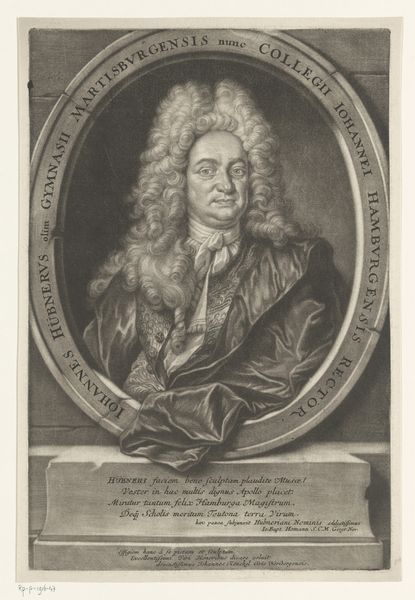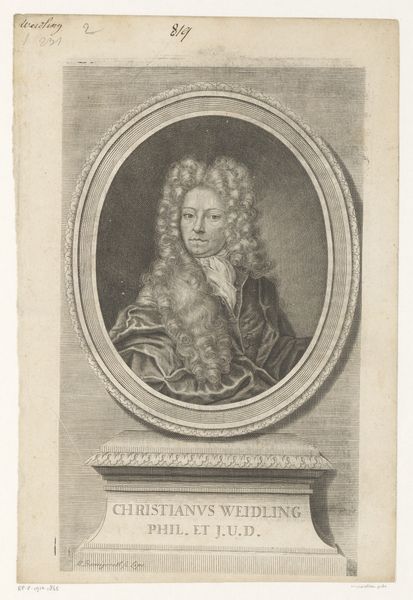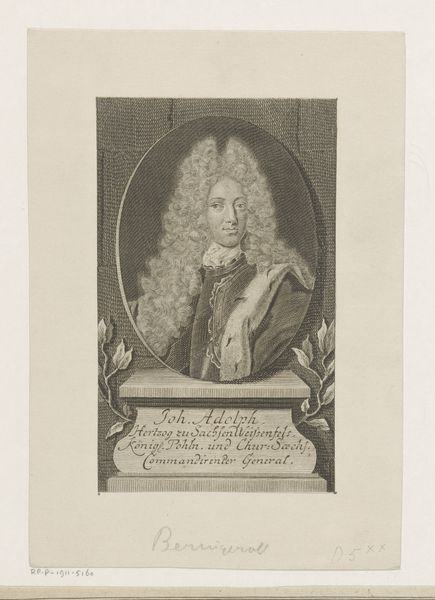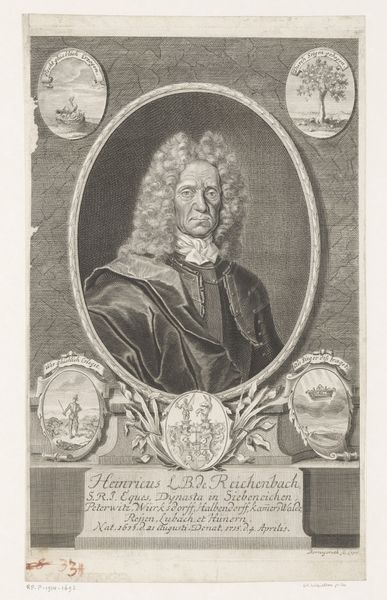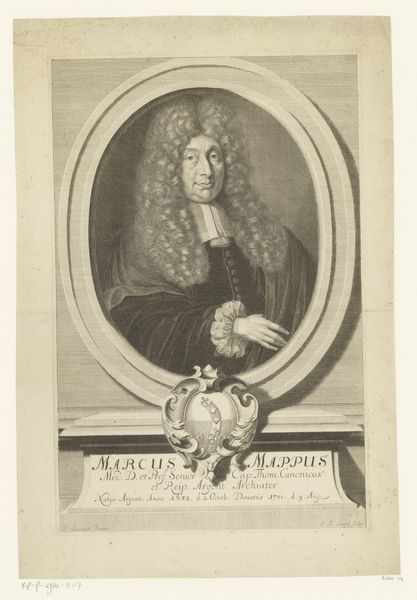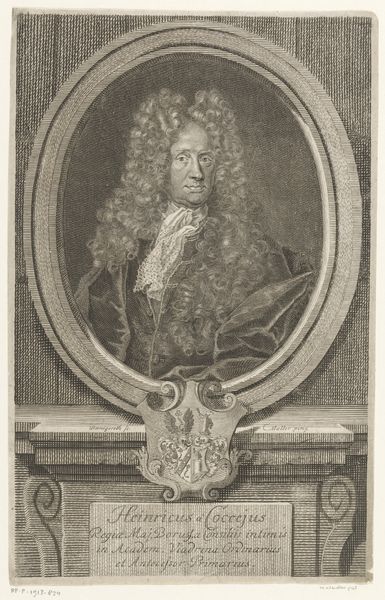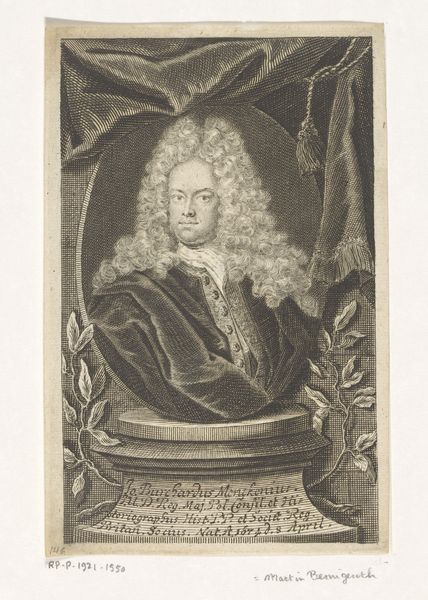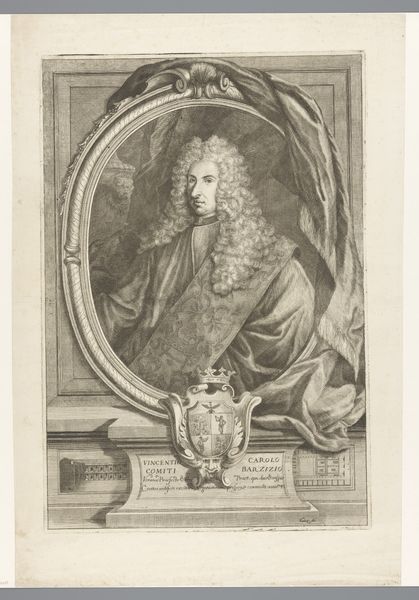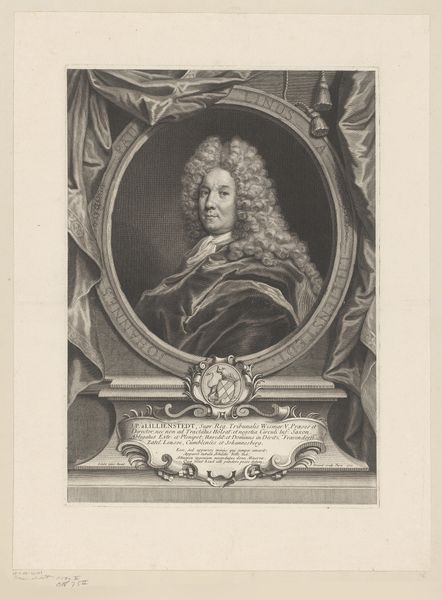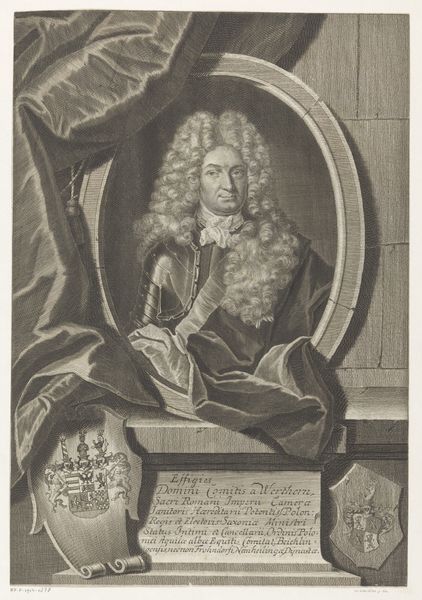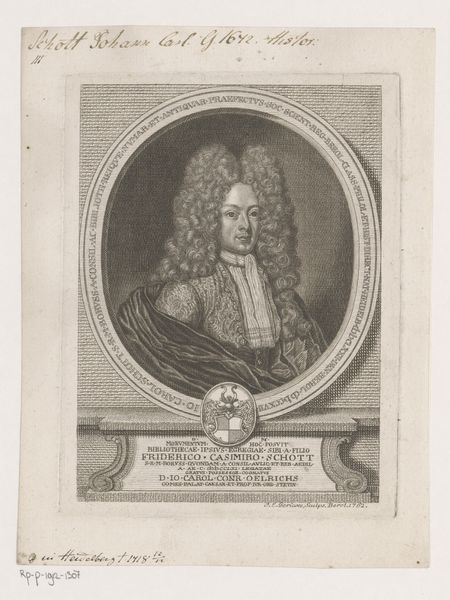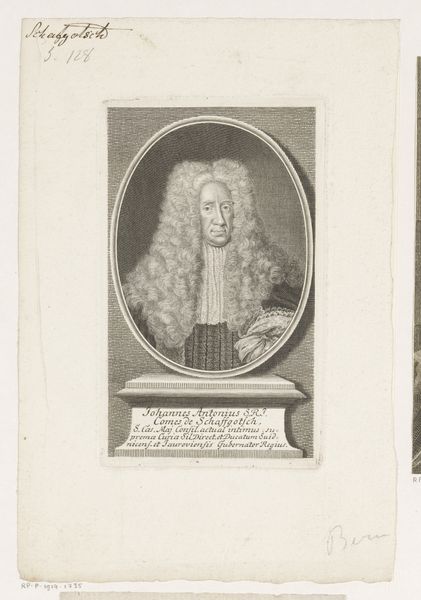
engraving
#
portrait
#
baroque
#
old engraving style
#
history-painting
#
engraving
Dimensions: height 454 mm, width 337 mm
Copyright: Rijks Museum: Open Domain
Curator: Oh, I adore this. It is a splendid example of 18th-century portraiture! The artwork we're looking at is a detailed engraving titled "Portret van Balthasar III Schnurbein von Meitingen," created around 1702 by Andreas Matthäus Wolfgang. Editor: Wow, there is something undeniably regal and intimidating. Even in engraving, the scale and details like that unbelievable wig lend an aura of supreme importance. It feels like a powerful, if slightly detached, representation of status. Curator: Status absolutely! This is the age of Baroque excess, and Balthasar certainly looks like he luxuriates in it! But tell me more about what you mean by detached. Editor: I think it is the overall effect— the formal composition, that stony expression of his... it feels calculated. What kind of iconography stands out to you? Curator: Well, certainly, the cartouche below with his heraldic arms roots him in his lineage and titles. Then there is the swagged drapery… Editor: Which could hint to his patronage and connections in the court or his affiliations with powerful guilds, like merchants. All these symbols are very Baroque, but I would add that this feels like it comes from an earlier age: like 16th-century Mannerist emblems or print series, or the famous works of Lucas Cranach the Elder in the previous century, not yet modern 18th century as we now understand the term... Curator: Yes, I see your point! There's definitely that linear quality which ties into early Renaissance imagery. Andreas' composition and artistic vision gives us so much information not just about this individual, but the complex status and cultural values of the day. What is your sense as to how this kind of symbolism endures? Editor: Images like these become imprinted in the collective unconscious; a collective history—of power, family, wealth, the 'elite’ even if the realities these symbols present may or may not be truthful, are a source from which to pull narrative through many generations. It is like ancestral memories embedded in visual languages. Curator: You have provided a much different framework. That’s how this image truly carries the emotional weight of a specific moment in time—it still makes us feel things today, doesn’t it? Editor: It certainly does, I hadn't quite thought about that until now. It's like, that wig isn’t just a wig; it’s a whole societal statement.
Comments
No comments
Be the first to comment and join the conversation on the ultimate creative platform.
